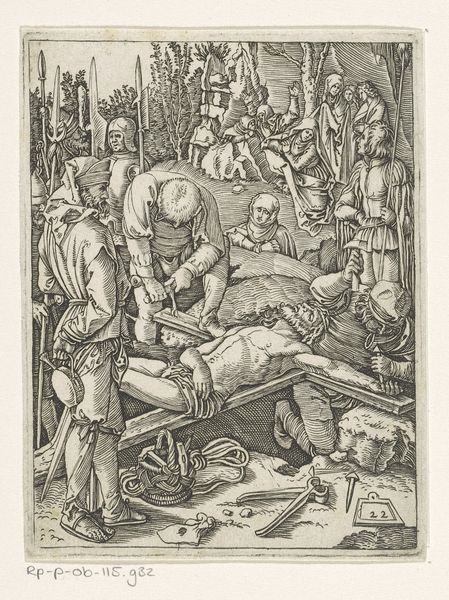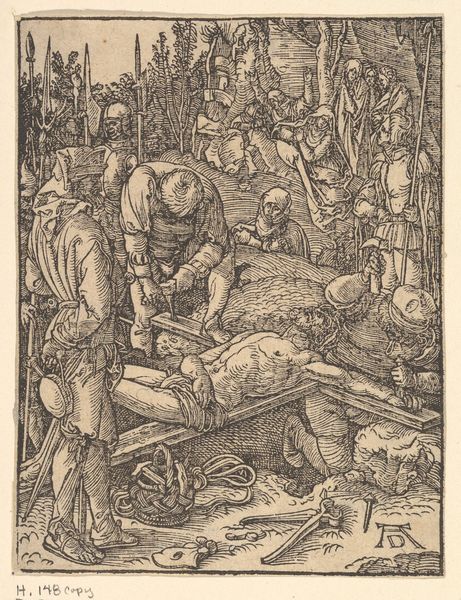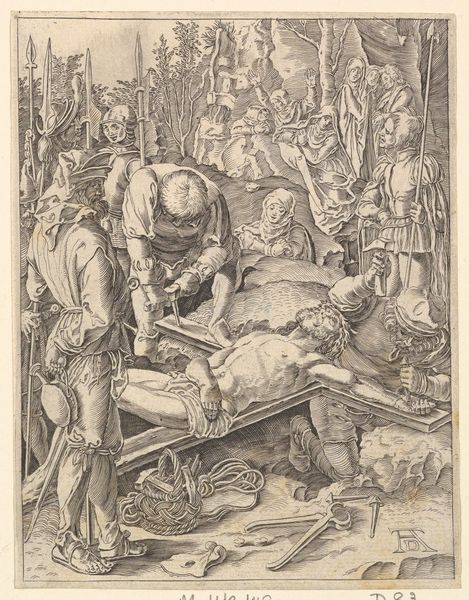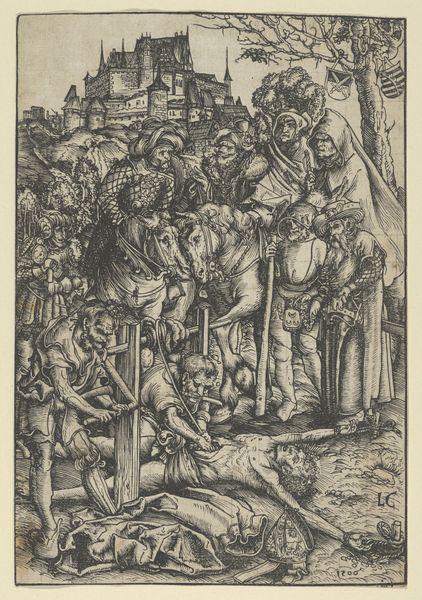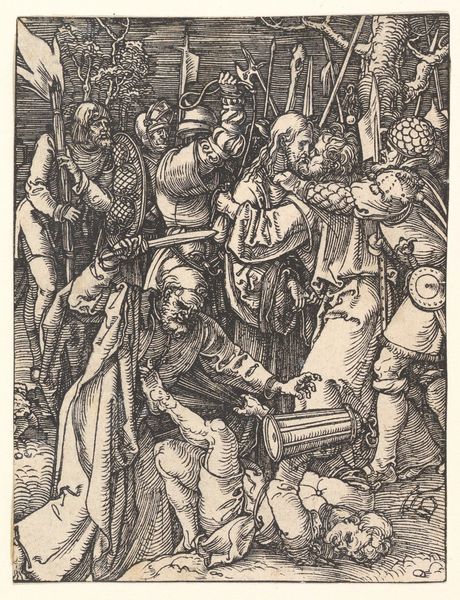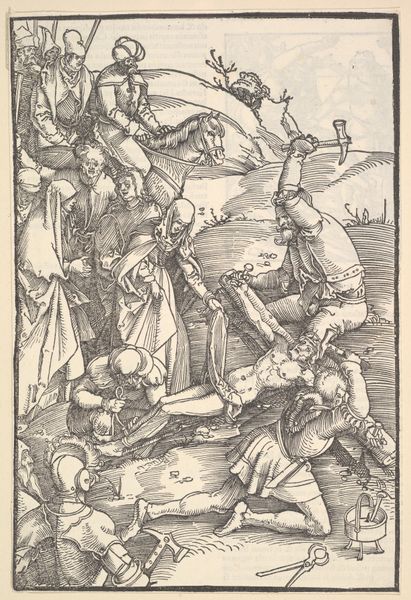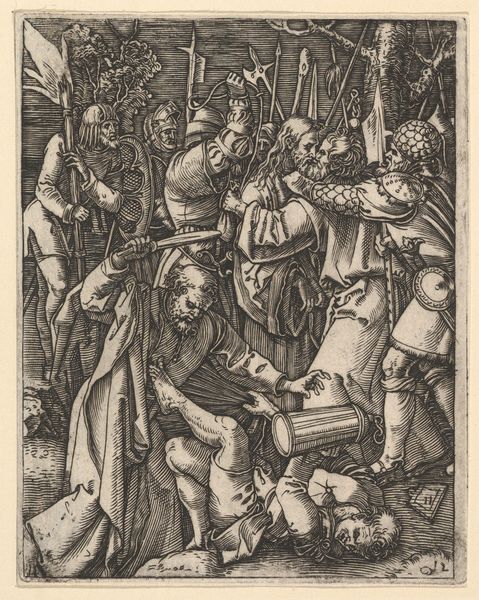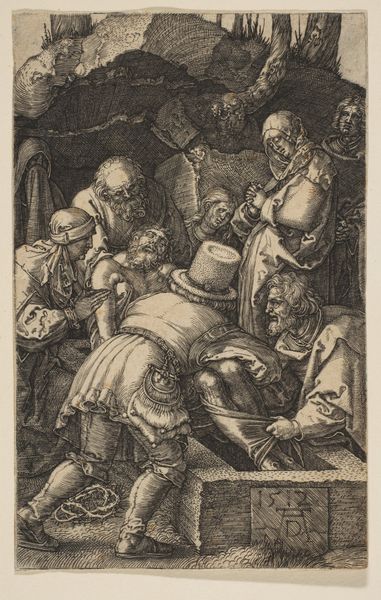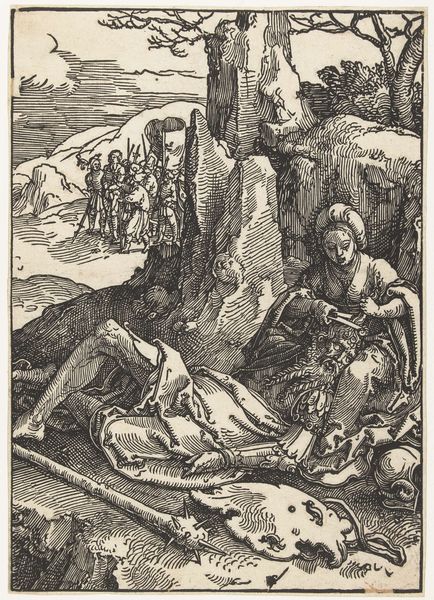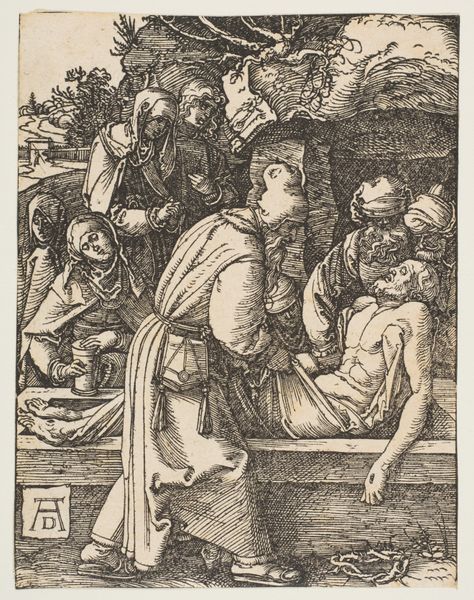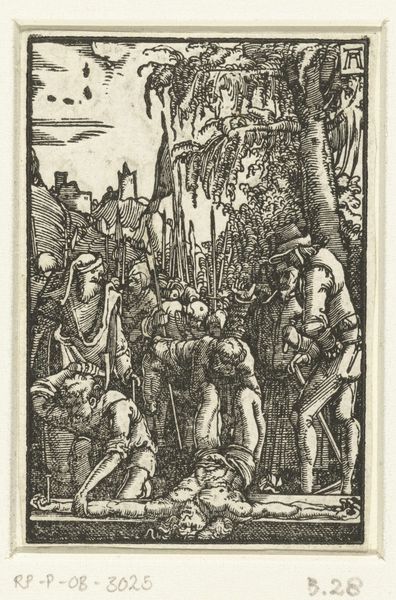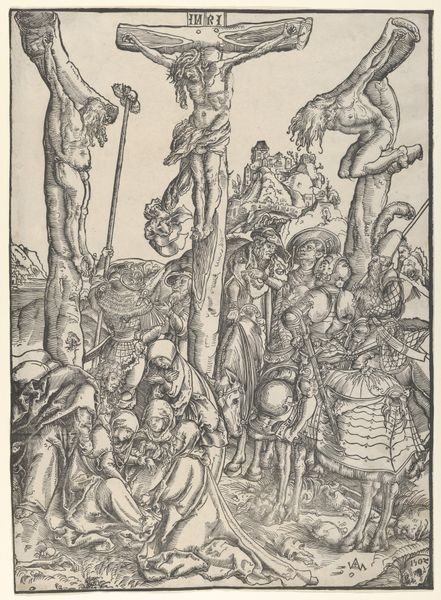
Dimensions: 5 1/16 x 3 13/16 in. (12.86 x 9.68 cm) (sheet)
Copyright: Public Domain
Editor: Today we’re looking at Albrecht Dürer's "Christ Nailed to the Cross," a woodcut from 1511. The raw emotion hits you immediately. There’s a brutality in the scene, but rendered with incredible detail using just black lines. How do you interpret this work, especially considering Dürer’s process? Curator: Dürer's "Christ Nailed to the Cross" throws us into the materiality of faith itself. A woodcut, a 'low' medium, is employed to depict a pivotal religious moment. Consider the labor invested: each line painstakingly carved into the woodblock, mirrored in the painful labor of Christ's crucifixion. Dürer transforms faith into a commodity produced by the physical effort, both his and that of the figures depicted. Look closely at the tools depicted—the hammers, nails, ropes. These aren’t simply instruments of torture, but the apparatus of a specific type of making, paralleling the creation of the print itself. Does seeing the work this way shift how you engage with it? Editor: It definitely does. I hadn't considered the choice of woodcut as commenting on the physicality of work and production. The suffering feels… manufactured, almost. Is that intentional, do you think? Curator: "Manufactured" is a strong word, but perhaps apt. The very act of reproducing this scene – of turning it into a purchasable print – changes its nature. Dürer allows us to consider how religious narrative became a mass-produced item, democratized yet also commodified through printmaking. The value isn't just spiritual, it is intimately linked to labor and, inevitably, commerce. Editor: So, he's not just depicting the nailing of Christ, but also nailing down the relationship between faith, work, and economy? Curator: Precisely. And the inherent tension between spiritual reverence and material production makes the work so compelling. Editor: This has completely changed how I view the print, seeing it as less of a purely religious depiction and more as a statement on the social context of art production itself. Thank you!
